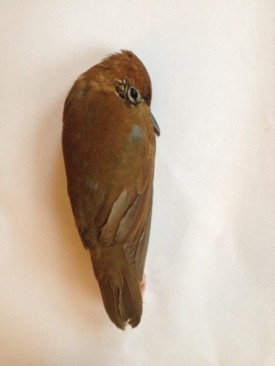 I just read a some news from NEXT Pittsburgh that seems pretty exciting. It concerns Garfield, one of the suburbs in Pittsburgh. It’s not a wealthy neighborhood. In fact, it’s one of the poorest neighborhoods in the state.
I just read a some news from NEXT Pittsburgh that seems pretty exciting. It concerns Garfield, one of the suburbs in Pittsburgh. It’s not a wealthy neighborhood. In fact, it’s one of the poorest neighborhoods in the state.  Stats from Neighborhood Scout say that the area is primarily made up of medium sized to large town homes and single-family homes, with the dubious distinction almost holding the national record for single mothers and 71.1% of children living in poverty. And yet it’s an area that has the raw materials for being something really special.
Stats from Neighborhood Scout say that the area is primarily made up of medium sized to large town homes and single-family homes, with the dubious distinction almost holding the national record for single mothers and 71.1% of children living in poverty. And yet it’s an area that has the raw materials for being something really special.
Garfield happens to be situated between two up and coming parts of the city: Lawrenceville – full of cafes, bars and boutiques – and East Liberty, home to much of Pittsburgh’s burgeoning tech industry. The neighborhood currently has 300-400 vacant parcels of land which, positioned where it is, could attract unsustainable development, loss of yet more of the city’s urban wildlife habitat and gentrify a lower-income area, with its attendant social issues.
Enter the Bloomfield-Garfield Corporation (BGC), along with neighborhood residents, who are presenting a plan to improve the area using green spaces. It calls for rezoning large swaths of vacant parcels in upper Garfield as “greenways”, a designation which would prevent the land from being developed in the future. If it goes ahead, trails and city staircases will lead to smaller parklets and existing green spaces, creating a looping path that would span much of the neighborhood.
Part of the plan includes a proposal that members of the community would steward the green zone themselves by placing the parcels into a community-owned land trust. It’s this involvement of the community in creating their own environment that I think is the standout of this proposal. Download a PDF version of the Garfield Plan at this link.
 This is only one of many projects taking place the city – formerly an industrial wasteland, it’s beautiful architecture covered in a century of grime – and making it a place that where nature and culture are truly integrated. Many of these projects are undertaken by the Pittsburgh Parks Conservancy. One standout initiative is the restoration of the Panther Hollow Watershed in Schenley Park, a key ecological area in Pittsburgh. The project has been going on for over a decade, addressing not only green spaces but the city’s ailing watershed as well.
This is only one of many projects taking place the city – formerly an industrial wasteland, it’s beautiful architecture covered in a century of grime – and making it a place that where nature and culture are truly integrated. Many of these projects are undertaken by the Pittsburgh Parks Conservancy. One standout initiative is the restoration of the Panther Hollow Watershed in Schenley Park, a key ecological area in Pittsburgh. The project has been going on for over a decade, addressing not only green spaces but the city’s ailing watershed as well.
I’m proud to say that my own institution is adding to the preservation and restoration of Pittsburgh’s urban wildlife, among other things through an initiative called “Birdsafe Pittsburgh“, a program to “research and reduce bird-glass collisions while educating the community to make Pittsburgh and beyond a better, safer world for birds.”
 It’s a partnership between eight local conservation organizations working to research and reduce bird mortality in the Steel City: Carnegie Museum of Natural History; the National Aviary; Chatham University; Western Pennsylvania Conservancy; American Bird Conservancy; Audubon Society of Western Pennsylvania; Green Building Alliance and the Animal Rescue League.
It’s a partnership between eight local conservation organizations working to research and reduce bird mortality in the Steel City: Carnegie Museum of Natural History; the National Aviary; Chatham University; Western Pennsylvania Conservancy; American Bird Conservancy; Audubon Society of Western Pennsylvania; Green Building Alliance and the Animal Rescue League.
The project involves volunteers of all ages who help to collect data by documenting any lifeless or injured birds in the greater Pittsburgh area.
People hear me quite frequently wax lyrical about the importance of having an experience of nature in our day-to-day lives. It’s nice to see the wealth of local initiatives that allow that to happen.

Leave a comment